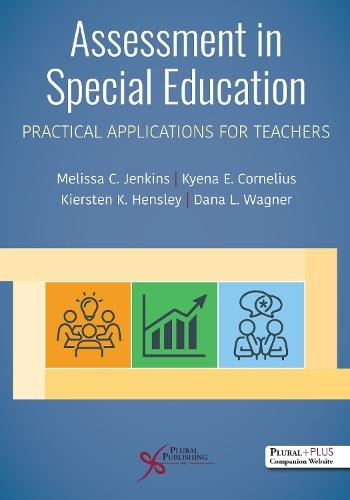Overview
For upper level undergraduate and graduate level courses, Assessment in Special Education: Practical Applications for Teachers presents a teacher-focused approach structured around the three primary ways in which practicing special educators use assessment. The text addresses why the assessments are used, how they are implemented, and what the results mean. This resource bridges theory and practice with case studies, evidence-based strategies, and clear guidance on integrating assessments into everyday practice. Utilizing practice-based learning, this text is designed to help pre-service and early-career teachers situate new knowledge in meaningful contexts. The text is organized into three sections specifically based on the sequence of interactions that special education teachers are likely to have with students new to their caseloads: Section I. Special Education Eligibility Determinations—Focuses on the comprehensive, multi-disciplinary evaluation process that is used to determine if a student qualifies for special education services under the Individuals with Disabilities Education Improvement Act (IDEA). This section includes information about administering and interpreting formal assessments that guide legal decisions and intervention planning. Section II. Progress Monitoring and Data-Based Decision Making—Covers a set of assessment practices that are used by special educators and other intervention providers to monitor student progress toward individualized goals across academic and behavioral outcomes. This book is unique among comprehensive assessment texts in providing detailed guidance about curriculum-based measurement, general outcome measures, and mastery measures as tools to guide intervention and help students maximize learning. Section III. Classroom Assessment—Provides a guide to using assessment as a tool for equity, engagement, and daily instructional decisions. This section explores how teachers can design and implement classroom assessments that not only measure learning but actively enhance it. Key Features Chapter learning objectives Case studies providing context for the concepts and skills addressed in each chapter Application opportunities aligned with the chapter objectives Bolded key vocabulary with in-text definitions Chapter review questions PluralPlus Online AncillariesFor instructors: PowerPoint Slides, Test Bank, Sample Syllabus, Video and Website Links, Vocabulary Matching Curriculum-Based-Measurement For students: eFlashcards, Links to Related Resources, Forms/Documents
Full Product Details
Author: Melissa C. Jenkins ,
Kenya E. Cornelius ,
Kiersten K. Hensley ,
Dana L. Wagner
Publisher: Plural Publishing Inc
Imprint: Plural Publishing Inc
Dimensions:
Width: 17.80cm
, Height: 1.40cm
, Length: 25.40cm
ISBN: 9781635507607
ISBN 10: 163550760
Pages: 313
Publication Date: 24 October 2025
Audience:
College/higher education
,
Adult education
,
Professional and scholarly
,
Tertiary & Higher Education
,
Postgraduate, Research & Scholarly
Format: Paperback
Publisher's Status: Forthcoming
Availability: Not yet available

This item is yet to be released. You can pre-order this item and we will dispatch it to you upon its release.
Author Information
Melissa C. Jenkins, PhD, is the vice president of curriculum & instruction for 2Teach Global, an educational consulting company dedicated to promoting inclusive education around the world. Prior to taking on this role, Melissa was an assistant professor of education at the University of Mary Washington, where she taught graduate and undergraduate courses in educational foundations and special education. She brings years of experience as a special education teacher and administrator to her role as a teacher educator. Melissa is committed to promoting inclusive education by preparing practicing and pre-service educators to recognize, value, and build upon the diverse experiences of all learners. She enjoys sharing her work through local, national, and international conferences. Additionally, Melissa is coauthor of two books, multiple book chapters, and several articles in educational journals. In her personal life, Melissa enjoys the practice of yoga, the occasional cross-country road-trip, and anything that lets her spend time with her family. Kyena E. Cornelius, EdD, is a clinical associate professor in the School of Special Education, School Psychology, and Early Childhood Studies at the University of Florida. Her scholarship focuses on teacher education, effective classroom instruction, and high-leverage practices. Her professional goals center around elevating the teaching profession. Kiersten K. Hensley, PhD, has more than two decades of experience in special education from a variety of perspectives, including classroom teaching, state and district consulting, and teaching in higher education. Her interests include assessment, intensifying math instruction, and social emotional learning supports for teachers and students. Dana L. Wagner, PhD, is an associate professor in the Department of Special Education at Minnesota State University, Mankato. Dana was a special education teacher and instructional coach prior to her work in higher education. Dana’s research interests include in-service and pre service teachers’ understanding and use of evidence-based practices and literacy interventions.



